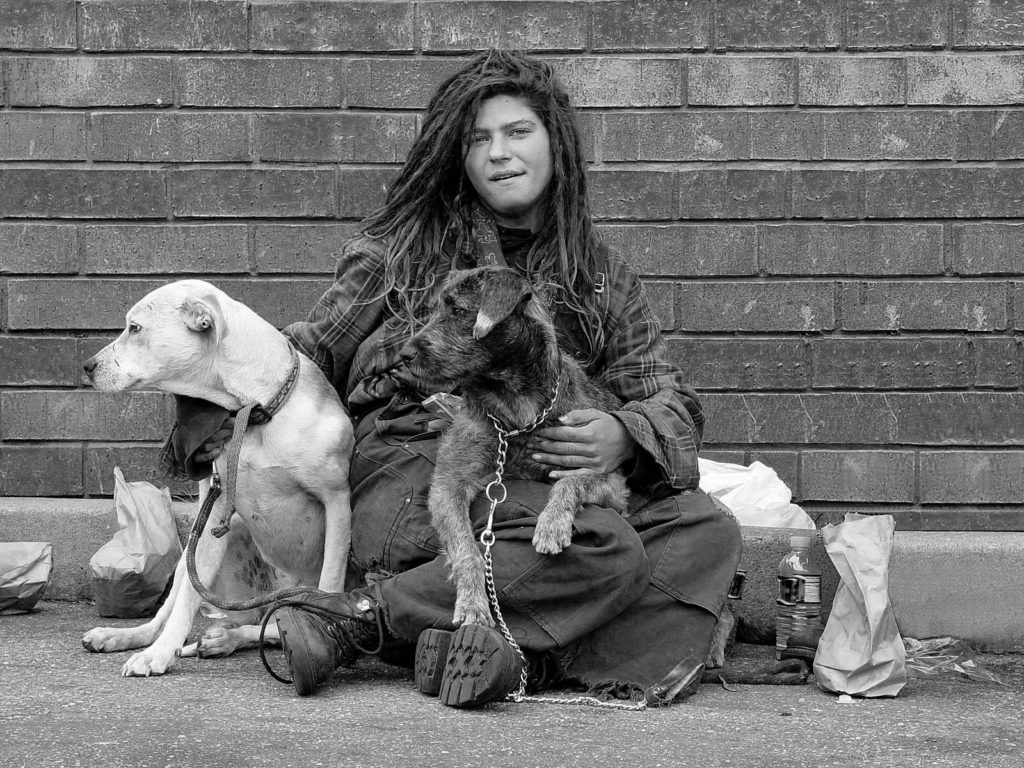[vc_row][vc_column][big_title title=”HOMELESS IMPACT ” title_size=”40px” css_animation=”fadeInDown”][vc_single_image css_animation=”fadeInDown” image=”4571″ alignment=”center” img_size=”1020×650″][vc_separator][vc_empty_space][vc_column_text]
Nowadays people are much more aware of homeless issues than ever before, but still, most people still find themselves in one of two categories; it is either “for” or “against”. But would people choose a third option if one was more readily available?
What if the best solution was a bridge between the two options?
Is there a way to reduce the number of homeless persons in areas that have public access while still maintaining our human compassion for those in need?
[/vc_column_text][vc_empty_space][big_title title=”How are shopping centers and industrial complexes impacted? ” sep=”yes”][vc_column_text]
These types of properties have been the natural destination for the homeless. Many provide a soft target in which to get food, solicit or steal. Restrooms are also readily available. There is also built in shelter and hiding places such as trash enclosures which make great places to sleep. Typically, these are private properties, which are not often monitored as well by the police.
As a security service provider, we deal with these issues daily. Of course, it is our responsibility and priority, to take care of our customer and their tenants but that does not have to be to the detriment of homeless people; all deserve to be treated with respect and dignity. That’s why we are connected with programs that focus on providing a compassionate solution to the situation. It is not just about calling the police, the problem will still be there and many homeless people simply return to the property later. So just removing the homeless persons is not a lasting solution.
It is our goal to expand our partnership with homeless shelters who share our beliefs. That way our guard force can connect the homeless persons they come across with a safe place, food and the help they need. We believe this a strong and lasting solution that will reduce the number of homeless returning to the properties we protect, by giving them a much better alternative.
[/vc_column_text][vc_empty_space][vc_empty_space][vc_column_text]
HOMELESS SHELTERS ARE POPPING UP WITH GREATER FREQUENCY THAN EVER BEFORE.
The federal and local governments have funded millions of dollars to organizations who run the shelters. Some of the allocated money has been mandated by court order. Some homeless advocacy groups have stepped up to support the displaced homeless persons resulting in court-ordered assistance.
What you may not know is on average, homeless people die at just 47 years old.
People sleeping on the street are almost 17 times more likely to have been victims of violence. More than one in three people sleeping rough have been deliberately hit or kicked or experienced some other form of violence whilst homeless.
Homeless people are over nine times more likely to take their own life than the general population.
As many as 3.5 million Americans are homeless each year. Of these, more than 1 million are children and on any given night, more than 300,000 children are homeless.
While the general impression is that the homeless are primarily the chronic and episodic, those unfortunate individuals often seen living on the streets in the downtown areas of our cities, the fact is that more than half the homeless are families with children. The vast majority of these have been thrust into homelessness by a life-altering event or series of events that were unexpected and unplanned for. Contrary to the belief that homelessness is primarily the result of major traumatic events or physical and mental disabilities, there are many top causes of homelessness in America.
[/vc_column_text][vc_empty_space height=”90px”][big_title title=”What causes homelessness? ” sep=”yes”][vc_column_text]
People become homeless for many different reasons. The social causes of homelessness, such as a lack of affordable housing, poverty, unemployment; and life events which cause individuals to become homeless.
People can become homeless when they leave prison, dependent care or the military with no home to go to. Many homeless women have escaped a violent relationship.
Many people become homeless because they can no longer afford the rent. And for many, life events like a relationship breaking down, losing a job, mental or physical health problems, or substance misuse can be the trigger. Being homeless can, in turn, make many of these problems even harder to resolve.
Homelessness is, in fact, caused by tragic life occurrences like the loss of loved ones, job loss, domestic violence, divorce, and family disputes. Other impairments such as depression, untreated mental illness, post-traumatic stress disorder, and physical disabilities are also responsible for a large portion of the homeless. Many factors push people into living on the street. Acknowledging these can help facilitate the end of homelessness in America.
Divorce costs and the associated lowering of a family’s total income can cause one or more family members to become homeless. For families that can hardly pay their bills, a serious illness or disabling accident may deplete their funds and push them out onto the street. Today, the rapid, unexpected loss of jobs and resultant foreclosures has caused great dislocation among families and has dramatically added to the number of people without a roof over their heads.
Natural disasters often cause current housing situations to become untenable and costly repairs are often simply not possible. The results of Hurricane Katrina stand in bleak testimony to the power of nature to displace people.
[/vc_column_text][/vc_column][/vc_row][vc_row][vc_column][vc_column_text] [/vc_column_text][/vc_column][/vc_row][vc_row][vc_column][vc_column_text]
[/vc_column_text][/vc_column][/vc_row][vc_row][vc_column][/vc_column][/vc_row]


